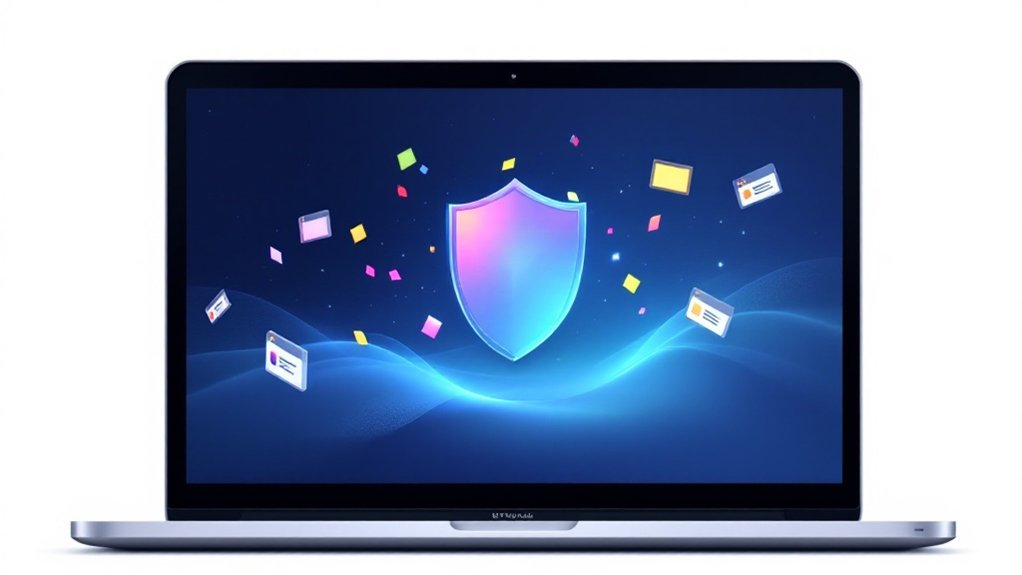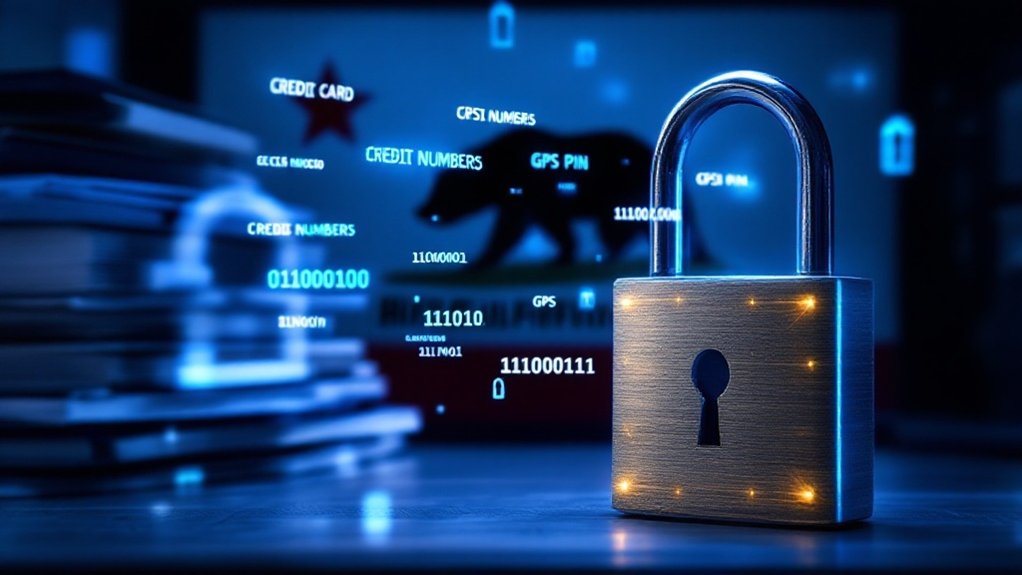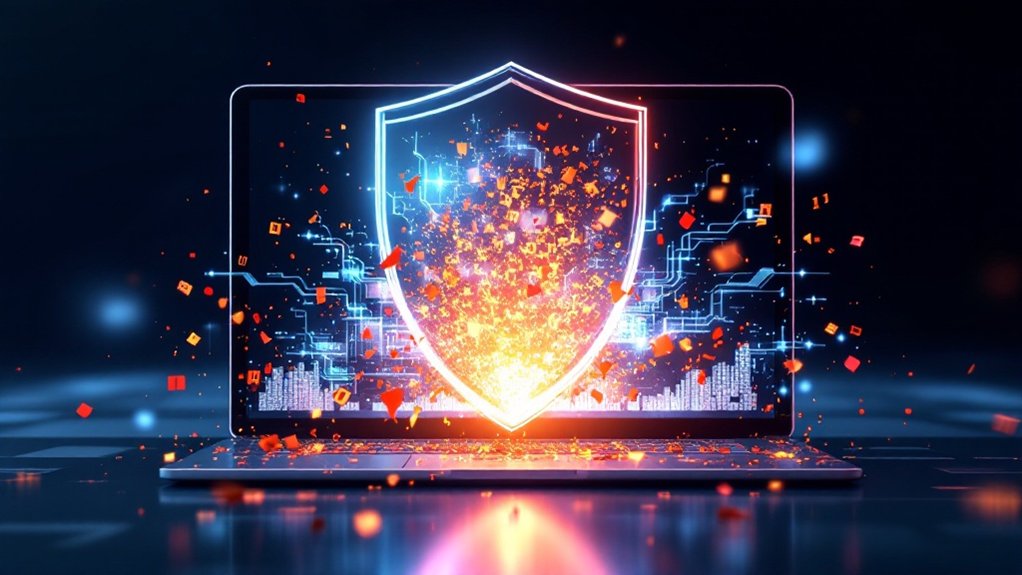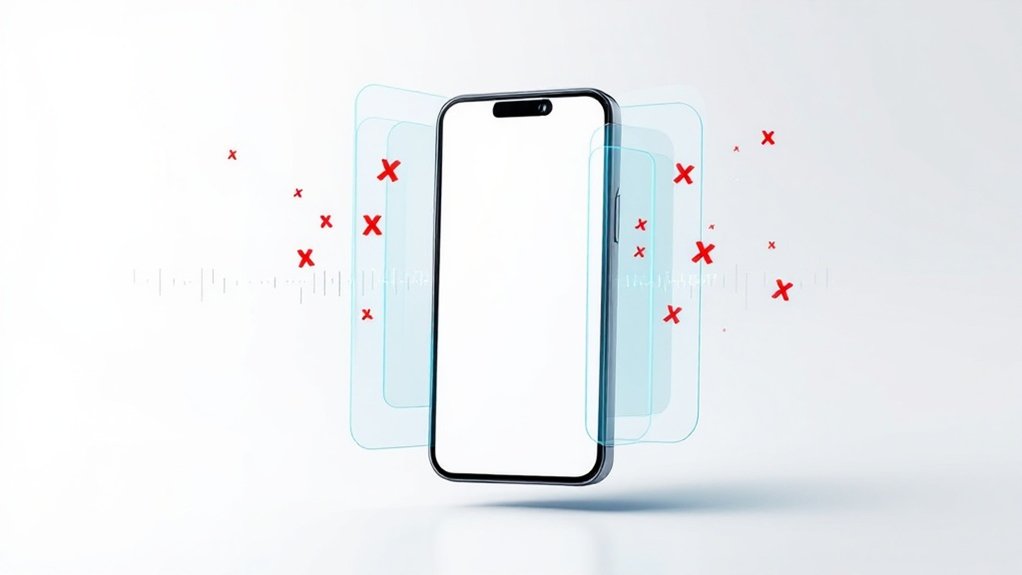A strong password requires a minimum of 12-16 characters incorporating uppercase letters, lowercase letters, numbers, and special symbols. Studies demonstrate that during 8-character passwords can be cracked within minutes, 16-character combinations may take billions of years to breach. Password examples like “correct-horse-battery-staple” or “goatpotatolakebuspants” combine unrelated words for improved security. Multi-factor authentication and password managers further reinforce account protection, with MFA preventing up to 99% of automated cyber attacks. Understanding additional password security measures can greatly improve digital protection.

As cybercriminals employ increasingly sophisticated methods to breach digital accounts, creating and maintaining strong passwords has become a vital cornerstone of modern cybersecurity practices. According to recent data, data breaches cost organizations an average of $4.88 million in 2024.
Security experts recommend passwords with a minimum length of 12-16 characters, incorporating a complex mix of uppercase and lowercase letters, numbers, and special symbols. Studies demonstrate that although 8-character passwords can be cracked within minutes, 16-character combinations may take billions of years to breach using current computing capabilities. Strong passwords require uppercase and lowercase letters for enhanced security.
The implementation of effective password strategies considerably improves account security through methods such as combining unrelated words or utilizing passphrases. For instance, “correct-horse-battery-staple” or “goatpotatolakebuspants” represent strong password examples that maintain both complexity and memorability.
Password management tools have emerged as vital solutions, generating and securely storing complex credentials while reducing the cognitive burden of remembering multiple unique passwords. Leading solutions like end-to-end encryption ensure maximum protection for stored credentials across all devices.
Multi-factor authentication (MFA) serves as an important supplementary security measure, requiring additional verification beyond password entry. This system typically incorporates biometric data, SMS codes, or authenticator apps, greatly decreasing the risk of unauthorized access even when passwords become compromised. Security analysts stress that MFA implementation can prevent up to 99% of automated cyber attacks.
Common vulnerabilities in password security often stem from user behavior patterns, including password reuse across multiple accounts and the incorporation of easily guessable information such as birthdates or names.
Cybersecurity experts strongly advise against storing passwords in unsecured locations or sharing them with others, recommending instead the use of encrypted password managers and regular security audits.
The evolution of password security continues to adapt to emerging threats, with current best practices stressing the importance of unique credentials for each account and the activation of breach notifications.
Organizations increasingly recognize that effective password management represents a fundamental aspect of thorough cybersecurity strategies, requiring ongoing education and implementation of strong security protocols to protect sensitive information from unauthorized access.
Frequently Asked Questions
How Often Should I Update My Passwords for Maximum Security?
Modern cybersecurity guidelines, including those from NIST, no longer recommend mandatory periodic password changes.
Instead, passwords should be updated only when specific security concerns arise, such as suspected breaches, compromised credentials, or unauthorized access attempts.
Organizations should focus on implementing strong initial passwords, two-factor authentication, and continuous monitoring for suspicious activities rather than enforcing arbitrary change schedules that may lead to weaker password selections.
Can Password Managers Be Hacked or Compromised?
Password managers can certainly be compromised, as evidenced by notable breaches at LastPass (2022), NortonLifeLock (2023), and Bitwarden.
Although these systems employ strong security measures like 256-bit AES encryption and zero-knowledge architecture, vulnerabilities exist through master password breaches, device-level compromises, and cloud-based attacks.
Nevertheless, security experts maintain that using a reputable password manager still offers considerably stronger protection than reusing passwords across multiple accounts.
Should I Use Different Passwords for Personal and Work Accounts?
Using different passwords for personal and work accounts is vital for cybersecurity.
Research shows 51% of people reuse passwords across accounts, creating significant vulnerabilities. When credentials are compromised in one account, hackers can exploit that same password to breach multiple systems through credential stuffing attacks.
Separating work and personal passwords limits potential damage, improves organizational security, and protects sensitive business data from unauthorized access.
Are Biometric Passwords Safer Than Traditional Text-Based Passwords?
Biometric authentication offers improved security compared to traditional passwords, with unique physical traits being notably harder to compromise than text credentials.
Even though passwords can be stolen or guessed, biometric markers like fingerprints and facial recognition provide stronger protection against common cyber threats.
Nevertheless, biometric systems have limitations, including potential accuracy issues and irreversibility if compromised.
Security experts recommend implementing multi-factor authentication combining both methods for ideal protection.
What Should I Do if I Suspect My Password Has Been Leaked?
Upon suspecting a password leak, immediate action is critical.
Users should swiftly change the compromised password to a complex, unique alternative, simultaneously enabling multi-factor authentication for improved security.
Thorough monitoring of account activity, including login history and unauthorized changes, becomes vital.
Furthermore, affected individuals should report the incident to service providers, check haveibeenpwned.com for exposure verification, and consider identity theft protection services if financial data was compromised.









